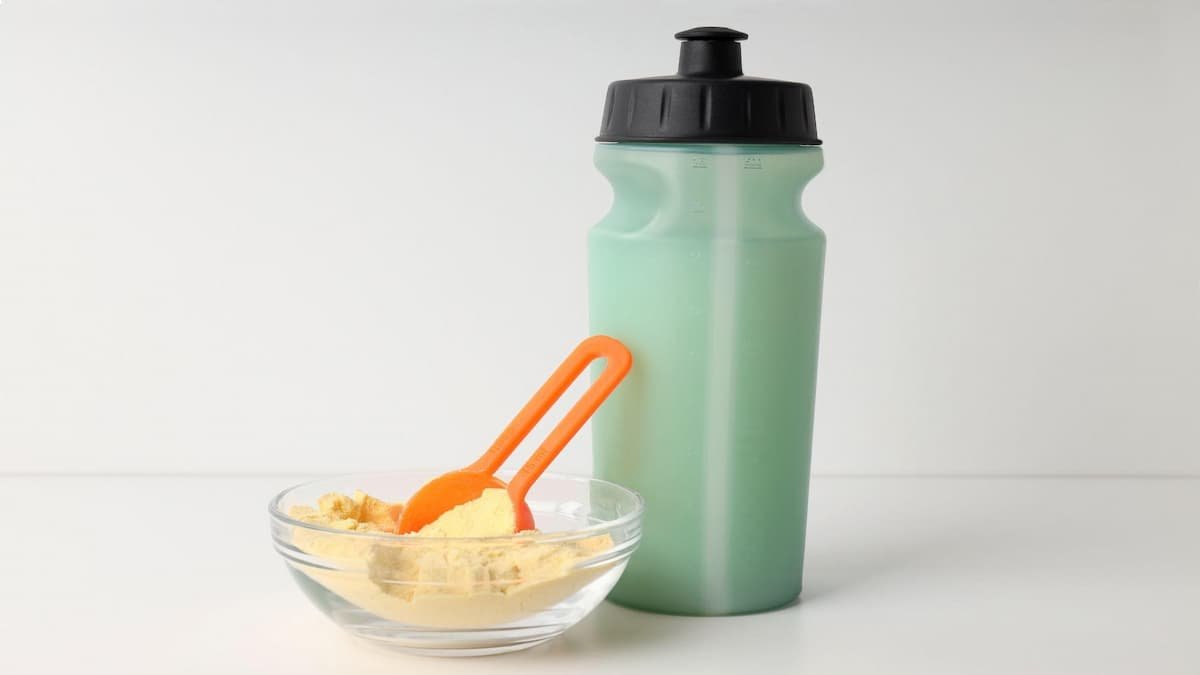Overview
There are a lot of different types of protein powders out there, one of which is whey protein. It is superior to other kinds of protein. Many important amino acids are included in this, making it a great source of fast absorption.
Numerous tests have shown it is effective in increasing strength, building muscle, and reducing body fat. Protein is only one aspect of whey’s value. Other nutrients, some of which have powerful biological effects.
It comes in many different types and has many different benefits and tastes. This article will explain to you everything you need to know about it.
What Is Whey Protein?
Casein and whey are the two milk proteins. Curding is a step in the cheese-making process that separates the curds from the whey.
Vitamins and minerals are found in it as well as all nine essential amino acids, which are the building blocks of protein. To manufacture whey protein powder, the liquid whey is filtered and dried.
Because it doesn’t taste very nice on its own, it’s often flavored. Whey protein powder flavored with chocolate, vanilla, and strawberry is popular. Powder flavored with chocolate, vanilla, and strawberries is popular. The list of ingredients on a product is critical since it may contain harmful chemicals like refined sugar. Adding it to your diet is an easy method to boost your protein intake. Bodybuilders and gym attendees, as well as those who are trying to slim down or just need more protein in their diet, may benefit from this.
In addition to smoothies and shakes, whey protein powder can be used to make protein bars, meal replacements, and other recipes as a nutritional supplement. Due to the fact that it is derived from dairy, whey is not considered a vegan product.
Types of Whey Protein
If you’ve ever come across a variety of whey protein products, how can you tell them apart? What is the difference between different types of whey proteins? What follows is a breakdown of types of whey protein.
- Concentrate: Products made with whey protein concentrate have very different amounts of protein, lactose, and fat. There can be anywhere from 30% to 80% of protein in whey protein concentrate. It is in many protein drinks, bars, and other products that helps you stay healthy.
- Isolate: This kind is always high in protein (90%) or more; it has less lactose and fat. On the labels of protein supplements you might see this information about how much protein they have. People who are lactose intolerant might be able to use whey protein isolate.
- Hydrolysate: Whey hydrolysate,also called hydrolyzed whey protein, is the easiest to break down for people. It’s easy to digest because its long protein chains, called peptides, have already been broken down into smaller ones before it gets to your body. Some infant formulas that are specially made use hydrolyzed whey protein. You may also see it in healthcare supplements for people who don’t get enough nutrients. It causes a 28 to 43 percent greater spike in insulin levels than isolate.
Essential Amino Acids
Your body makes many amino acids on its own, but not all of them. You need to get your essential amino acids through your food. Whey protein is one way to do that. It is a complete protein because it has all nine of the necessary amino acids. It’s important for the body to have amino acids to do a lot of different things, like build muscle and make new immune cells.
Whey Protein Health Benefits
- Helping weight loss: 158 people took part in one study published in Nutrition & Metabolism. Those who consume whey protein powder “lost significantly more body fat and showed a greater preservation of lean muscle than subjects who took the control beverage.
- Lowering cholesterol: The British Journal of Nutrition published a study that gave whey supplements to 70 overweight men and women for 12 weeks. They checked their lipid and insulin levels, as well as other things, at the end of the study. There was a big difference between the whey group and the casein group when it came to total cholesterol and LDL cholesterol at the end of the 12th week.
- Muscle building: Muscles love complete proteins like whey, which are good for them. It is made up of branched-chain amino acids, which are a type of amino acid that helps to build muscle.
- Healing Wounds: It has all of the essential and non-essential amino acids. It is also a good source of glutamine and branched-chain amino acids, which help cells grow. Thus, whey has a lot of amino acids that are important for healing wounds.
- Weight Gain: People who need to gain weight can use whey protein to help them do that. It’s also good if someone has a long-term illness and needs extra food. Supplementing with whey protein can help you get enough protein. It’s good for people who have problems chewing or swallowing, or who don’t want to eat.
Side Effects
A lot of people can eat whey protein without having to worry about allergies to dairy. However, there are some drawbacks to this diet plan
- Calorie content: It is low in fat and carbohydrates, yet it still contains calories. Too many calories from any source, including protein, causes weight gain.
- Added Sugar: Artificial flavors, sweeteners, or added sugar are common in many protein powders. Whole foods and a diversified diet are superior sources of protein than supplements, bars, or shakes. Look for a supplement that only has whey protein in it if you want to take it.
- Digestive Issues: When taking excessive quantities of it, some people report experiencing constipation, diarrhea, or nausea.
Is it delicious?
It has a slightly chalky flavor with a hint of cheese and milk, but it’s not overpowering. Moreover, it isolates and hydrolysates, two more refined forms, can also have a slightly bitter taste. Its mild flavor makes it ideal for adding your favorite flavors, such as chocolate, vanilla, and fruit flavors, on top of the whey protein. Vanilla-flavor is a great starting point for experimenting with different flavor profiles.

Sherya is a post-graduate in Health and Nutrition, and an inquisitive person who loves writing. She is working for Vegan Way and her forte is a digital marketing and everything that has to do with phones and screens. Her belief is that one person can make a difference, and that’s why she has taken up writing, which is the best means to communicate these days. She had a decade of experience in writing and marketing, and she still finds herself learning new things about it, which she want to share with her readers.




